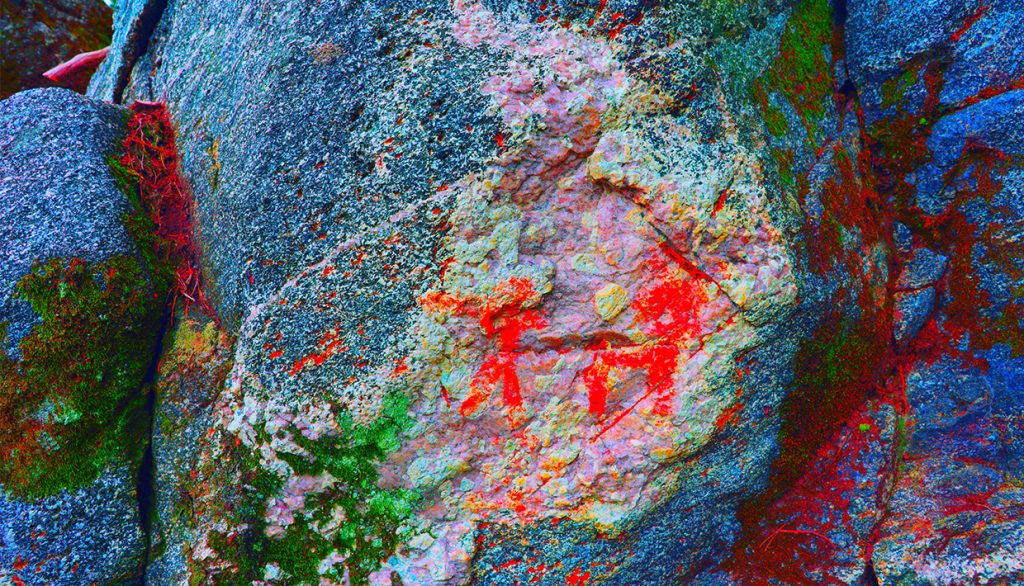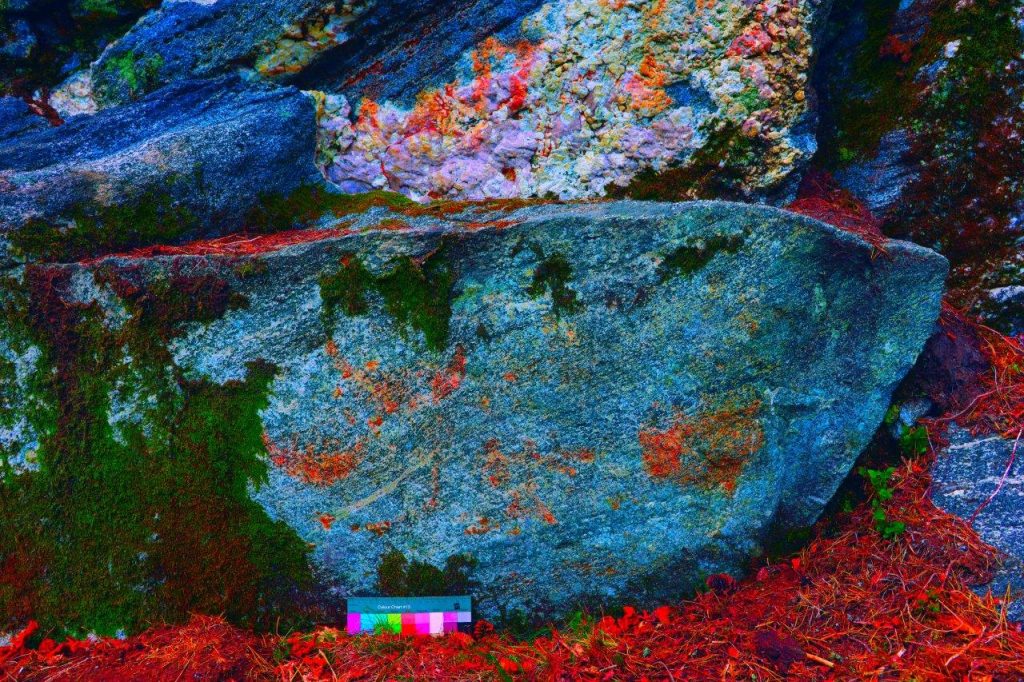A man hiking with his family in the countryside near Oslo, Norway, came across a rock face covered in Bronze Age paintings.
The find didn’t come as a complete surprise, however, to Tormod Fjeld, a dedicated graphic designer and amateur archaeologist who has tracked down more than 500 petroglyphs with friends during the last years.
So when Fjeld spotted a rock nearby with unusual coloring as he was taking a break from his hike, he was ready. Fjeld pulled out his phone, took a photo, then hooked it up to an app that could clarify whether the marks were natural pigments, such as iron deposits, or something altogether more interesting.
Once a scene of human and animal figures appeared, he quickly called Jone Kile-Vesik, the local archaeologist, with whom Fjeld had collaborated on several occasions before.

Experts believe the painting depicts a hunting scene. Photo: Jan Magne Gjerde, NIKU.
“We were enjoying a little snack of juice and cookies on a Sunday when I saw something red on the rock,” Fjeld said in an interview with the Norwegian Institute for Cultural Heritage Research (NIKU). “I took a picture and went into the app. I had something like an out of body experience. I didn’t really think it could be anything.
Kile-Vesik called in a team from NIKU to inspect the rocks and they quickly confirmed Fjeld’s latest discovery. The paintings, which include depictions of rowers and standing human figures, are the first to be found in the coastal area of Østfold and Viken, although the precise location is, for now, being kept secret from the public. protect, since contact can quite easily removes pigments.

A scene with a boat and rowers, a color effect by Dstretch and Adobe Photoshop has been added. Photo: Jan Magne Gjerde, NIKU.
“They are extremely difficult to find due to the low light of the paint,” NIKU’s Jan Magne Gjerde told Artnet News. “Not many people have searched for them, so few have been found, although we’re sure there are more paintings.”
This is the first time this type of painting has been discovered in southern Norway and, based on the patterns and styles, researchers believe they were made in the Bronze Age, although the Iron Age remains a possibility.
The researcher also noted that the paintings had been protected by the overhang of the rock, which means that it is possible that the whole rock was at some point covered in marks.
More trending stories:
Follow Artnet News on Facebook:
Want to stay one step ahead of the art world? Subscribe to our newsletter to receive breaking news, revealing interviews and incisive reviews that move the conversation forward.
